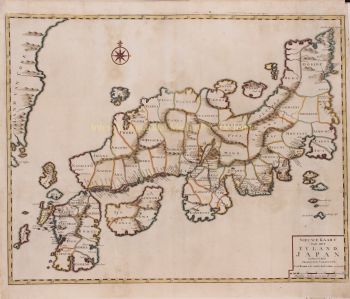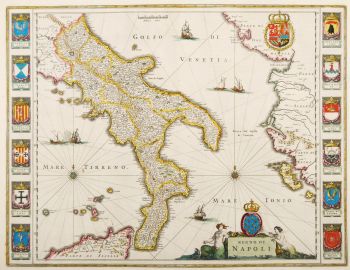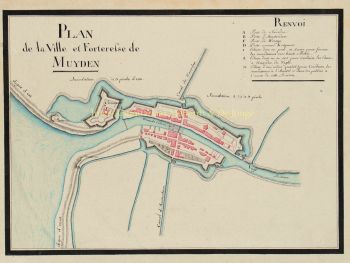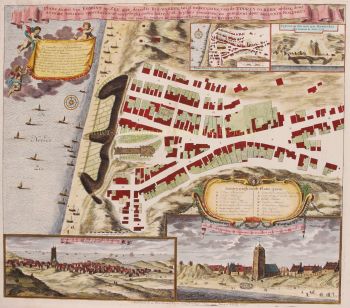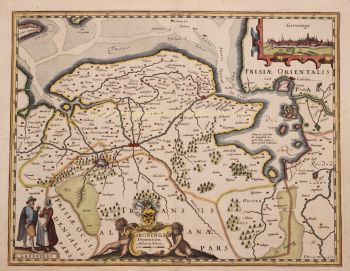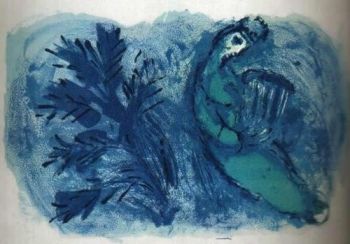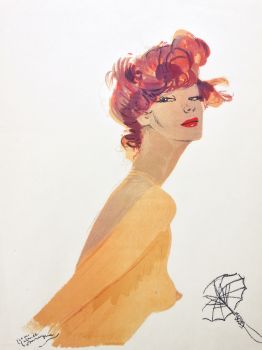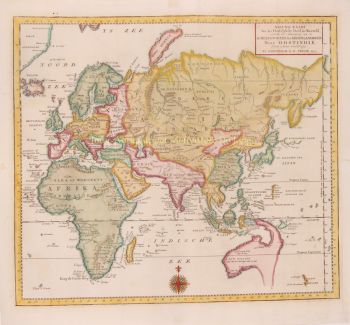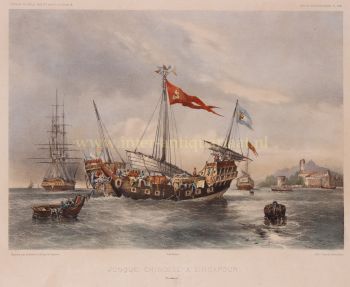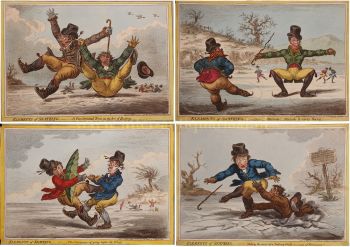North- and South Pole 1696
Pieter Mortier
PapierAfdrukken
43 ⨯ 52 cm
€ 4.950
Inter-Antiquariaat Mefferdt & De Jonge
- Over kunstwerkPOLAR PROJECTION MAP ON TWO HEMISPHERES “Les Deux Poles Arctique ou Septentrional, et Antarctique ou Meridional, ou Description des Terres Arctiques et Antarctiques ; et des Pays circomvoisins jusques aux 45. Degres de Latitude.” (The two poles – Arctic on the northern hemisphere, and Antarctic on the southern, as well as the description of the Arctic and Antartic earth and the surrounding lands up until 45 degrees latitude.) Copper engraving published by Pieter Mortier in Amsterdam after the design by Nicolas Sanson. The map was included in Pieter Mortier's Atlas Nouveau in 1696. With original hand colouring. Size: approx. 43 x 52 cm. This is a beautiful example of Pieter Mortier's double-hemisphere map of the north and south poles. The primary hemispheres focus on the northern and southern thirds of the world. The secondary hemispheres show the entire world, centered respectively on Paris and its antipodes. The geographical content of the primary hemispheres is drawn from the 1657 map of French cartographer Nicolas Sanson (whose title is shared by the present work.) These do not constitute a world map per se. The polar projections end at 45º south and north respectively. The southern polar projection on the right is dominated by a massive southern continent, marked “Terre Magellanique Australe et Incogneue” (the southern and unknown land of Magellanica.) The northern hemisphere shows Europe north of central France and the Black Sea, Asia north of the Caspian Sea and Turkestan, and Spitzbergen and Nova Zemla are shown as partial coastlines. North America shows the Great Lakes in their unfinished form. The northern part of North America is shown including the Saint Lawrence River, Newfoundland, and the Canadian Maritimes. Hudson's Bay, Button's Bay, Baffin's Bay, and the Davis Strait are all shown, with numerous openings in the coastline suggesting the possibility of a Northwest Passage. Greenland is shown as a landmass contiguous with North America, and nearly connecting with Spitzbergen. Additionally, the North American landmass reaches westward to include the speculative “Terre de Yezo, ou Iesso”, which contemporaneous cartographers presented as beginning as the island of Hokkaido. The decorative elements - up to and including the framing of the secondary hemispheres, and the cartouche banner - are copied from Nicolas Visscher’s world map of 1658. Visscher's artist - the Dutch painter Nicolaes Berchem - created nuanced, layered allegorical scenes representing each of the four elements in the map's four corners. The scene for 'Air' in the upper right corner shows Zeus and Hera in a chariot pulled by eagles, with putti flying in attendance. For 'Earth', in a woodland scene at the bottom right, Demeter gifts a hungry mankind the fruits of the Earth, in an overflowing cornucopia. The scene representing 'Fire' in the upper left corner takes place in the underworld, showing the abduction of Persephone by Hades. In the aquatic scene in the lower left, Poseidon woos Aphrodite in a hippocampus-drawn chariot, with mermen bugling wetly from conches and playing tambourines. The top ancillary hemisphere is flanked by angelic figures, while the bottom is flanked by a mermaid (facing the water scene) and a satyr facing the Earth vignette. The cruxes of the four hemispheres are each peopled with a trio of putti. Price: Euro 4.950,-
- Over kunstenaar
De eerste Pieter Mortier (Leiden, 1661 – Amsterdam, 1711) was de zoon van een politiek vluchteling uit Frankrijk en werd kaartenmaker en graveur. Hij reisde in 1681–1685 naar Parijs en keerde daarna terug naar Amsterdam, waar hij van 1685 tot 1711 als boekverkoper opereerde.
Hij verwierf in 1690 het voorrecht kaarten en atlassen van Franse uitgevers in Amsterdam uit te geven voor de Nederlandse markt. Hij gebruikte dit voorrecht om een vergelijkbare reeks privileges te winnen voor het drukken van een "geïllustreerde gedrukte bijbel" in 1700. Ook bekend als "Mortier's Bible" (Nederlands: Mortierbijbel of Prentbijbel Mortier), de officiële naam van dit boek was Historie des Ouden en Nieuwen Testaments, verrykt met meer dan vierhonderd printverbeeldingen in koper gesneeden ("Geschiedenis van het Oude en Nieuwe Testament: verrijkt met meer dan vierhonderd gedrukte illustraties in koper gesneden").
In Amsterdam was hij gevestigd in Middeldam, 1685–1686, en vervolgens in Vijgendam, 1686–1711. Zijn uithangbord was "Stad van Parijs" tussen 1685 en 1700. Het was bekend dat hij een fictief uitgeversadres gebruikte in Antwerpen en ook in Londen. De Short Title Catalogue Nederland schrijft het verschijnen van 261 titels toe aan Pieter Mortier I.
Tijdens het eerste decennium van de achttiende eeuw daagde Mortier de hugenoot Estienne Roger uit voor de dominantie van de polyfone bladmuziekmarkt door een prijzenoorlog te voeren.
Hij trouwde met Amelia 's-Gravensande (1666–1719), die als weduwe zijn uitgeverij tot aan haar dood leidde. Het echtpaar kreeg twee zonen, Pieter Mortier II (zie hieronder) en Cornelis Mortier (1699–1783), die samen met Johannes Covens I (1697–1774) de kaartenuitgeverij Covens & Mortier (1721–1866) oprichtte die later de grootste cartografische uitgeverij in de achttiende eeuw.
Bent u geïnteresseerd om dit kunstwerk te kopen?
Artwork details
Related artworks
- 1 - 4 / 24
Jean-François Rauzier
Oasis Hotel - Limited edition of 8 2017
Prijs op aanvraagVilla del Arte Galleries
Cornelis Anthonisz Theunissen
ZEER ZELDZAME EERSTE GEDRUKTE KAART VAN AMSTERDAM, EEN STAD IN OPKOMST1544
€ 175.000Inter-Antiquariaat Mefferdt & De Jonge
 Gecureerd door
Gecureerd doorDanny Bree
1 - 4 / 17Adrianus Johannes Groenewegen
Schaapsherder met kudde1874 - 1963
Prijs op aanvraagGalerie Het Noorderlicht
1 - 4 / 24- 1 - 4 / 12






